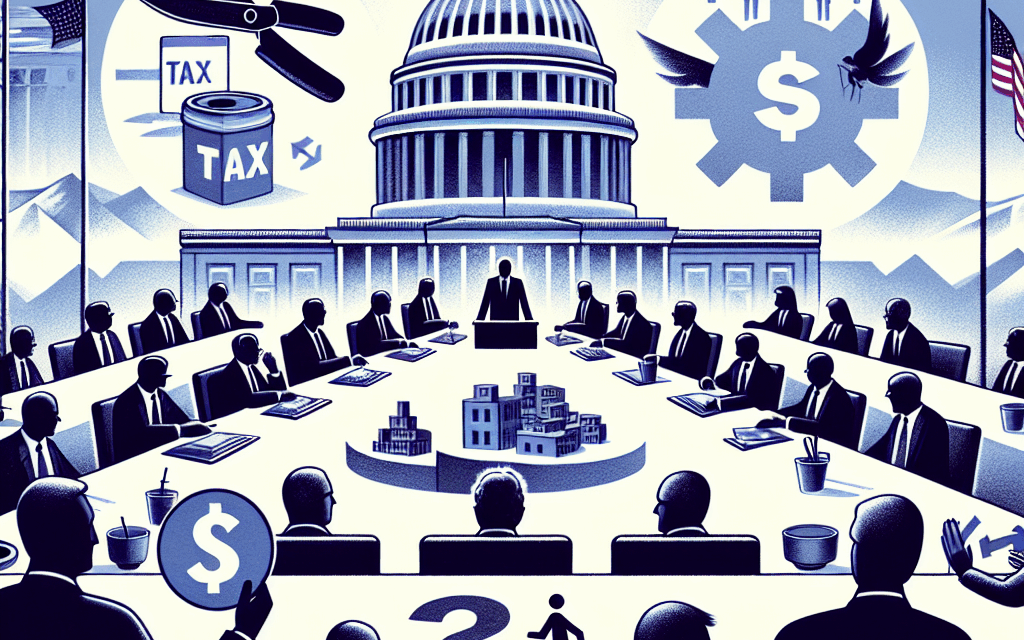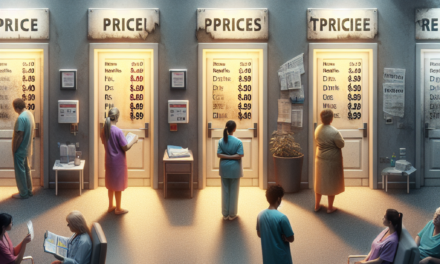House Republicans Propose Medicaid Cuts with Work Requirement and Provider Tax Freeze
The ongoing debate surrounding Medicaid in the United States has taken a new turn as House Republicans propose significant cuts to the program, coupled with a work requirement for beneficiaries and a freeze on provider taxes. This proposal has sparked a heated discussion about the implications for millions of Americans who rely on Medicaid for their healthcare needs. In this article, we will explore the various facets of this proposal, its potential impact on beneficiaries, healthcare providers, and the broader healthcare system.
Understanding Medicaid: A Brief Overview
Medicaid is a state and federal program that provides health coverage to low-income individuals and families. Established in 1965, it has become a critical safety net for millions of Americans, covering a wide range of services, including hospital visits, long-term care, and preventive services. As of 2021, Medicaid covered over 80 million individuals, making it one of the largest health insurance programs in the country.
Medicaid is jointly funded by the federal government and states, with the federal government providing a matching rate that varies by state. This partnership allows states to tailor their Medicaid programs to meet the specific needs of their populations. However, this flexibility also means that Medicaid can be subject to political changes, as seen in the recent proposals by House Republicans.
The Proposed Cuts: An Overview
The House Republicans’ proposal to cut Medicaid funding is part of a broader effort to reduce government spending and reform entitlement programs. The proposed cuts include:
- Reduction in federal funding for Medicaid.
- Implementation of work requirements for certain beneficiaries.
- Freezing provider taxes that help fund Medicaid.
These measures are intended to address concerns about the sustainability of Medicaid funding and to encourage self-sufficiency among beneficiaries. However, critics argue that these cuts could have devastating effects on vulnerable populations who depend on Medicaid for their healthcare needs.
Impact on Beneficiaries: Who Will Be Affected?
The proposed cuts and work requirements could significantly impact millions of Medicaid beneficiaries. The work requirement, in particular, raises concerns about access to healthcare for low-income individuals who may face barriers to employment.
According to a report from the Kaiser Family Foundation, approximately 60% of adult Medicaid beneficiaries are already working, while others may be unable to work due to disabilities, caregiving responsibilities, or other factors. The imposition of work requirements could lead to:
- Loss of coverage for individuals who cannot meet the work criteria.
- Increased administrative burdens for states to verify compliance.
- Potential health consequences for those who lose coverage, including delayed care and worsening health outcomes.
For example, in Arkansas, a similar work requirement was implemented in 2018, leading to over 18,000 individuals losing their Medicaid coverage within the first few months. Many of these individuals reported that they were unaware of the new requirements or faced challenges in meeting them due to job availability or health issues.
Furthermore, the proposed cuts could disproportionately affect marginalized communities, including people of color, rural residents, and those with disabilities. These groups often face systemic barriers to employment and healthcare access, making it even more challenging to comply with work requirements.
Provider Tax Freeze: Implications for Healthcare Providers
The proposed freeze on provider taxes is another critical aspect of the House Republicans’ plan. Provider taxes are levied on healthcare providers, such as hospitals and nursing homes, to help fund Medicaid programs. Freezing these taxes could have several implications:
- Reduced funding for Medicaid programs, leading to cuts in services.
- Increased financial strain on healthcare providers, particularly those serving low-income populations.
- Potential closures of facilities that rely heavily on Medicaid funding.
Healthcare providers have expressed concerns that freezing provider taxes could jeopardize their ability to deliver care. For instance, many rural hospitals operate on thin margins and rely on Medicaid funding to stay afloat. A reduction in funding could lead to service cuts or even closures, further limiting access to care for vulnerable populations.
Moreover, the freeze on provider taxes could exacerbate existing disparities in healthcare access. Low-income individuals often rely on community health centers and safety-net providers, which may struggle to maintain operations without adequate funding. This could lead to longer wait times for care, reduced services, and ultimately poorer health outcomes for those who depend on these providers.
Political Landscape: Support and Opposition
The proposal to cut Medicaid funding and implement work requirements has garnered mixed reactions from lawmakers and advocacy groups. Supporters argue that these measures are necessary to rein in government spending and promote personal responsibility among beneficiaries. They contend that work requirements can help individuals transition to self-sufficiency and reduce dependency on government programs.
However, opponents of the proposal argue that it undermines the fundamental purpose of Medicaid as a safety net for vulnerable populations. Advocacy groups, including the American Medical Association and the National Association of Medicaid Directors, have voiced strong opposition to the proposed cuts and work requirements, citing concerns about access to care and health outcomes.
Additionally, public opinion on Medicaid cuts is often divided along partisan lines. While some constituents support efforts to reduce government spending, many also recognize the importance of Medicaid in providing essential healthcare services. Polls indicate that a significant majority of Americans believe that Medicaid should be preserved and expanded, particularly in light of the ongoing COVID-19 pandemic.
Case Studies: Lessons from Other States
To better understand the potential impact of the proposed Medicaid cuts and work requirements, it is essential to examine case studies from states that have implemented similar measures. These examples can provide valuable insights into the consequences of such policies.
One notable case is Arkansas, which implemented a work requirement for Medicaid beneficiaries in 2018. The state initially reported a significant drop in enrollment, with over 18,000 individuals losing coverage within the first few months. Many of these individuals cited confusion about the requirements and difficulties in finding work as reasons for their loss of coverage.
Another example is Indiana, which introduced a work requirement as part of its Medicaid expansion under the Healthy Indiana Plan. While the state reported some success in increasing employment among beneficiaries, it also faced challenges in ensuring that individuals remained compliant with the requirements. The administrative burden of tracking compliance and verifying work status placed additional strain on state resources.
These case studies highlight the complexities and potential pitfalls of implementing work requirements in Medicaid programs. While proponents argue that such measures can promote self-sufficiency, the experiences of states like Arkansas and Indiana demonstrate that the reality is often more complicated, with many individuals facing barriers that prevent them from meeting the requirements.
Conclusion: The Future of Medicaid and Its Beneficiaries
The House Republicans’ proposal to cut Medicaid funding, implement work requirements, and freeze provider taxes represents a significant shift in the approach to healthcare for low-income individuals. While supporters argue that these measures are necessary for fiscal responsibility, the potential consequences for millions of beneficiaries cannot be overlooked.
As the debate continues, it is crucial to consider the voices of those who will be most affected by these changes. The experiences of states that have implemented similar measures serve as important reminders of the complexities involved in reforming Medicaid. Ultimately, any changes to this vital program must prioritize the health and well-being of its beneficiaries while ensuring that healthcare providers can continue to deliver essential services.
In summary, the proposed cuts to Medicaid, along with work requirements and a freeze on provider taxes, raise significant concerns about access to care and health outcomes for vulnerable populations. As lawmakers grapple with these issues, it is essential to strike a balance between fiscal responsibility and the fundamental purpose of Medicaid as a safety net for those in need.





